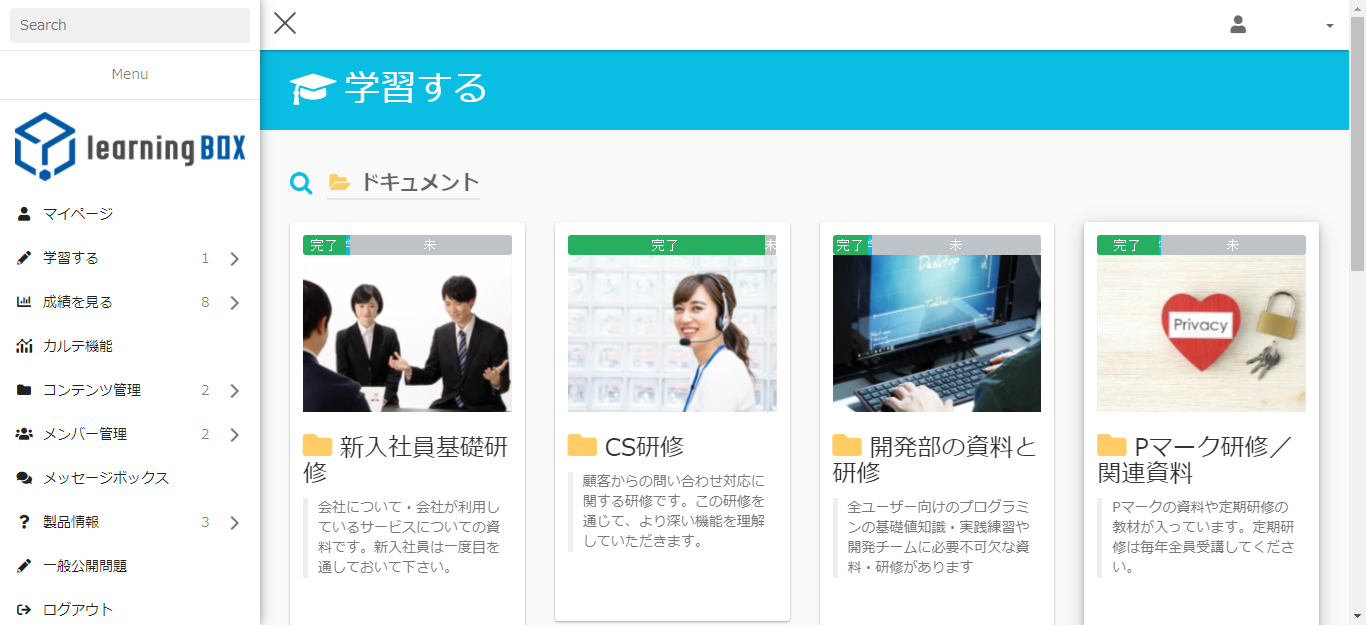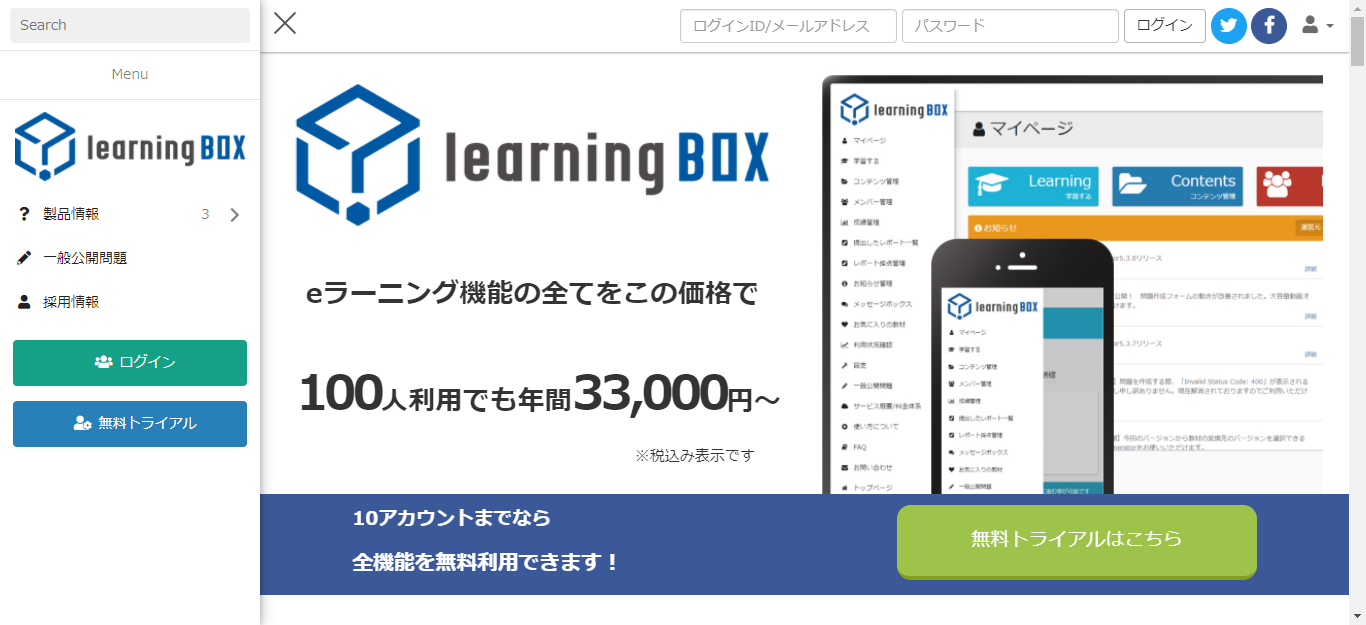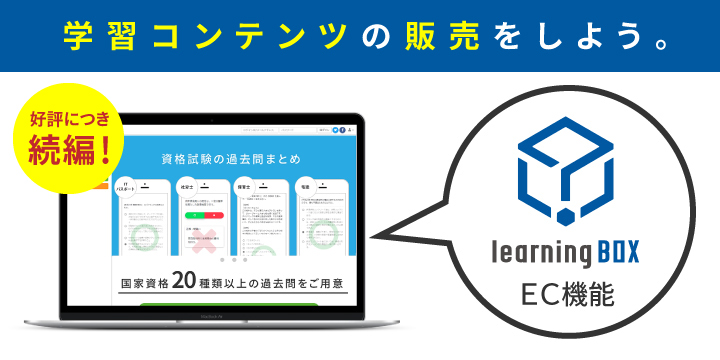The size of the eLearning market is growing in demand
The size of the eLearning market is growing in demand
My name is Kataoka, in charge of marketing. In order to prevent the spread of the new coronavirusOnline learning through e-learning learning systems is gaining a lot of attention.This is due in part to the fact that, in addition to the measures taken to prevent coronavirus infection, it is becoming harder and harder to get an effect from conventional employee training methods such as group training and OJT.
Research firm Yano Research Institute (Nakano, Tokyo) has released data that predicts the domestic e-learning market will be worth 246 billion yen in fiscal year 2020, up 4.5% from the previous year. According to the data, demand for online learning is expected to continue even after the spread of the new coronavirus is over, and the provision of online learning services such as distance learning and online classes will increase at cram schools and other facilities where face-to-face instruction is not possible.
In this article, we will discuss the background and reasons for the need for e-learning learning in the future.
Content
- 1. the market size trends for e-learning in FY 2019
- 2. key points that make e-learning a focus of employee training
- 3. eLearning learning application scenarios!
- 4. efficient human resource development using learningBOX
- 5. Summary
Market size trends for e-learning in FY 2019
In BtoB, the market is booming from the revitalized investment in corporate talent development.
In fiscal 2019, the domestic e-learning market is expected to grow 7.7% year-on-year to 235.4 billion yen. This includes 68.4 billion yen in the corporate (including individuals within companies and organizations) B-to-B market (up 5.2% YoY) and 167 billion yen in the individual B-to-C market (up 8.8% YoY), both of which are expected to continue expanding.
Source.Yano Research Institute|Results of a survey on domestic e-learning market
According to the article, this is how it is written, and it shows that the e-learning market is growing in size for both B-to-B and B-to-C markets.
In the BtoB market, the diversification of learning tools due to the popularization of smartphones and tablets, the evolution of video content, the evolution of the cloud environment and the ease of use of e-learning, combined with the activation of corporate human resource development needs, has made e-learning more popular than ever before. It's pervasive across industries and companies.
What is BtoB?
Business to Business (BtoB) refers to business to business transactions, where a company provides goods and services to a company.
Strong sales growth in the BtoC market
In fiscal 2020, the domestic e-learning market is forecast to grow 4.5% year-on-year to 246 billion yen. The current fiscal year is expected to see an increase in the number of e-learning users as a result of increased demand for distance learning due to the impact of the new coronavirus outbreak in both B-to-B and B-to-C markets.
Source.Yano Research Institute|Results of a survey on domestic e-learning market
The BtoC market has seen a steady increase in the number of users and the introduction of e-learning as a form of personal learning, due to the spread of learning styles using smartphones, tablets and SNS, the evolution of services provided by improvements in information and communication technology, and the emergence of learning services that use artificial intelligence (AI). We are progressing a generalizing environment.
Both the BtoB and BtoC markets are expected to continue to expand in the future.
What is BtoC?
Business to Consumer (BtoC) refers to transactions in which companies provide goods and services to individuals. For example, companies that sell goods to the general public, such as consumer electronics manufacturers, apparel and department stores, are BtoC.
Reference: the domestic e-learning market will continue to expand in fiscal 2019 on the back of steady growth in the number of users and the diversification of services offered|Yano Research Institute Co.
What makes e-learning a hot topic for employee training

Many companies are looking to implement learning and training for their employees through e-learning. Some may be considering implementing it, wondering if their company is the right environment to use e-learning and whether it will be effective. Why are companies looking at e-learning? Let's take a look at the reasons.
No. 1: Repetition can be done at any time and place, and in any employee's spare time
With the diversification of work styles today, it's not a matter of uniformity in employee training as in the past.A training style that can be implemented at any time and place to suit the timing of employeesmay be desired.
With paper-based materials, it takes time to get the latest information out to everyone because it needs to be created, printed and distributed each time you want it to be updated.
No. 2: Minimize money and time spent on human resources development.
Companies that used to conduct training in groups often end up spending a lot of money to conduct a single training session, such as venue, transportation and accommodation costs.
Also, with group training, the training is ad-hoc, and if there is something that you don't understand at a later date, you can only rely on the minutes of the meeting. This is where e-learning comes into play, as it allows the same training to be delivered to people in remote areas via the Internet, reducing costs.
The problems with traditional training can be summarized as follows
Human and time costly: ・・・・・
There are costs associated with securing instructors, having attendees leave their normal duties, and scheduling. Also, if the size of the venue restricts the number of participants, or if the number of instructors is increased based on the number of participants, the costs may increase.
It will take time to implement the training: ・・・・・
When a large number of people gather for training, it takes a certain number of days to prepare for the training, from site selection and scheduling to planning the training content, to ensure that it is meaningful.
Benefits of e-learning
Easy to manage students' learning
Low running costs.
Less work to prepare in advance
The quality of education can be standardized.
Here's a look at how eLearning learning is being used!

E-learning is a learning method that utilizes the Internet. Videos and other learning content are stored on a server (a learning management system) and delivered to students on their mobile devices, such as PCs, tablets, and smartphones with an Internet connection. Therefore, as long as there is an internet connection, each student can study at their own time and place.
E-learning has many benefits, but it can be difficult to determine whether it can be used effectively and whether it's right for your company. So, how is e-learning actually used in companies? Here are some examples of how it is being used.
Used in corporate training for new employees
More and more companies are introducing e-learning for the purpose of training unofficial employees. By using e-learning, you can reduce the time and cost of training, measure the progress of the trainees' learning and performance, and use it as a decision-making tool for future assignments.
Used as an internal information sharing tool
Some companies implement e-learning for the purpose of sharing materials and surveys. E-learning is a very useful tool for sending and collecting tests and surveys for employees all at once. Another great feature of e-learning is that it can be used at the level of the organization, department, or individual within the company to provide personalized training to each individual.
Efficient human resource development with learningBOX
learningBOX is an e-learning system that allows anyone to start e-learning with ease. The concept of this e-learning system is "easy to use" and "low cost".
Experience the feature-rich platform
LearningBOX is available for 100 accounts starting at $33,000 per year, and up to 10 accounts are free for an unlimited period of time, so sign up for learningBOX and see how easy it is to use and what you can do!
Please refer to the case study below to see the actual results and benefits of learningBOX.

➡ Click here to see a case study of learningBOX
Summary
In this article, we've taken a look at the size of the e-learning market, which is likely to continue to grow in demand, and the reasons behind it. Some may be considering implementing it, wondering whether their company is the right environment for e-learning and whether it will be effective.
LearningBOX is free to use for up to 10 accounts. It takes less than 5 minutes to create an account. If you are interested in using eLearning, or are considering implementing eLearning, please contact us. We invite you to try the learning box for free. Thank you for your patience with this paper as well.
- Learn how to create e-learning materials to motivate students to learn!
- Duplication of items during user registration
Comment ( 0 )
Trackbacks are closed.









No comments yet.